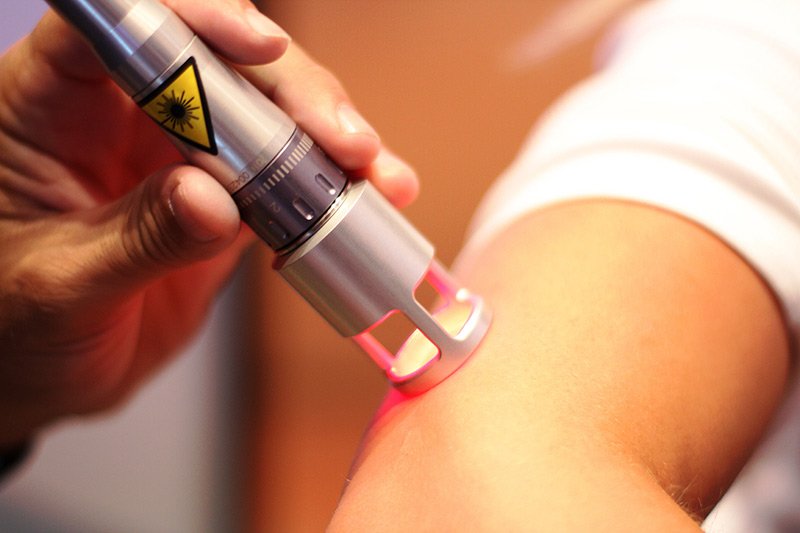By Angeline Kado
Laser therapy is spreading fast and quickly becoming a popular procedure with people of all genders and ages.
Today, it is offered by several clinics, centers and hospitals within the country. A quick online search is sure to give you a glimpse of how fast the technology is spreading in the country. And all this is thanks to the many conditions it has been proved to correct. From shrinking and destroying tumours, to repairing detached retina, to hair and tattoo removal; it’s not hard to see why laser therapy is receiving the positive nod from all corners.
Brief History of Laser Therapy
According to Jeremy Bensler, a Registered Physiotherapist and Owner of Pro Motion Physiotherapy and Sports Injury Clinic, Albert Einstein is often credited with the development of Laser Theory as he used the term, stimulated emission in his theory Zur Quantum der Strahlung as early as 1916.
However, it was 50 years later that the healing power of the laser was discovered. After the first working laser was invented in 1967, Endre Mester carried out lab tests on mice to establish whether or not the exposure to laser caused cancer.
“He exposed one group to laser treatment using a low-power laser while the control group received no laser therapy. The mice who received laser therapy experienced much faster hair regrowth than the control group. Thus, photo-biostimulation, which is the activation of the cell by light, was discovered.” says the Physiotherapist.
An Important Component of Medicine
Laser is actually an acronym standing for Light Amplification by Stimulated Emission of Radiation, while laser therapies are medical treatments that use focused light. But different from most sources of light, light from a laser is tuned to particular wavelengths (one colour of light) which makes it possible to be focussed into powerful beams.
Laser treatment remains an important component of medicine as it allows surgeons to perform surgeries at high precision levels while focusing on small areas. The result of which is less damage of the surrounding tissue.
As Dr. Douglas Ulmer, an expert dermatologist based in California, US puts it, a laser treatment is not painful or causes very little pain that is manageable for most people.
“However, for some treatments that do involve more pain (such as Fraxel) or for individuals who have a lower tolerance for pain, topical analgesics can be applied a few minutes prior to the procedure to reduce or eliminate discomfort. Oral pain relievers can also be taken beforehand if you are worried about pain,” he adds.
Different from traditional surgery, those that undergo laser therapy usually experience less swelling, pain and scarring.
Not a Cheap Affair
If you are thinking of undertaking laser treatment, you should be prepared to part with your hard earned money as the procedure might not always be cheap.
However, considering the growing number of centers and clinics that provide these services in the country, the costs are likely to vary for the different types of procedures and also depending on where you go.
The Medical Applications
Medically, Laser medicine can be explained as the use of lasers in medical diagnosis, therapy or treatment. These include photorejuvenation, photodynamic therapy and laser surgery. These range from repairing detached retina, removal of kidney stones, treating hair loss and treating pain.
The treatment is also used for sealing nerve endings for pain reduction after surgery, sealing blood vessels-so as to prevent the loss of blood, as well as sealing the lymph vessels-to limit spreading of tumor cells.
While it is useful in the treatment of cancer in the very early stages, laser therapy is often used alongside other forms of treatment including chemotherapy, radiation and surgery.
Cosmetic Uses of Laser Therapy
The ever expanding function of lasers in cosmetic surgery is undeniable. This can be attributed to the reproducible precision in the effective management of a number of skin conditions and disorders; for which no other existing forms of treatment have been developed.
Some examples of cosmetic uses of laser therapy include; the fading or removal of warts,lessen the appearance of wrinkles, sun spots, vascular and pigmented birthmarks and the removal of unwanted hair.
Advantages of Laser Treatment
Unlike traditional surgical instruments, laser treatment is more precise, hence allow for shorter and shallower cuts. The result of which is less damage to tissues.
Additionally, operations involving lasers are often shorter than the more traditional surgeries. This means that they can be carried out on an outpatient basis without the need for admission for days.
While traditional forms of surgery often take longer to fully heal, things are different with laser therapy as patients often heal faster. Add the fact that you may experience less pain, swelling and scarring and you see why many opt for it.
Disadvantages of Laser Treatment
While most experts agree that laser therapy is a perfectly safe and an alternative complementary treatment for medical issues such as pain management and healing, it does have its down side.
According to the National Cancer Institute, the therapy has a number of limitations.
Firstly, surgeons must undergo specialized training before carrying out laser therapy which must also go hand in hand with strict safety precautions.
Secondly, the cost aspect comes into the picture as laser treatment is mostly expensive and needs bulky equipment.
Lastly, the effects of the therapy may not last for very long and hence doctors may be required to repeat the treatment for the patient to enjoy the full benefit.
So if you are thinking about undertaking Laser therapy whether for cosmetic or medical reasons, now you have a clearer sense of what it entails.














